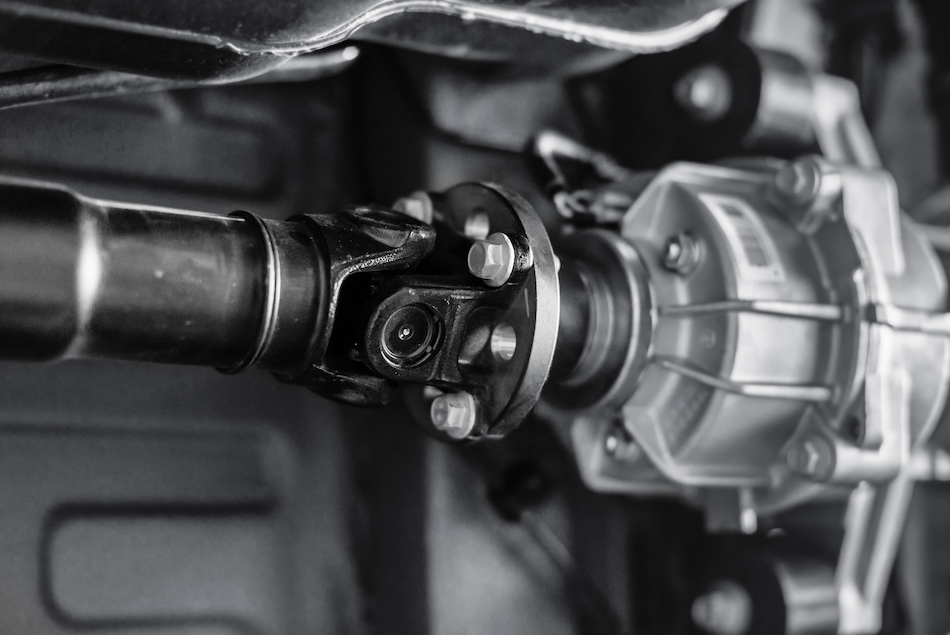The driveshaft is a crucial component of your vehicle’s drivetrain, responsible for transmitting power from the engine to the wheels. Is your driveshaft failing? In this month’s blog post, we examine the function of the driveshaft, how to recognize signs of failure, and how to maintain it to keep your vehicle running smoothly and avoid costly repairs.
What is a Driveshaft and Its Function?
A driveshaft, also known as a propeller shaft, is a long, tubular component that connects the transmission to the differential, transferring the engine’s rotational power to the wheels. This allows your vehicle to move forward or backward. Driveshafts are typically found in rear-wheel-drive, four-wheel-drive, and all-wheel-drive vehicles. They are designed to handle the torque and stress generated by the engine while compensating for the movement of the suspension.
Signs of a Failing Driveshaft
A failing driveshaft can lead to various issues, affecting your vehicle’s performance and safety. Here are some common signs to watch out for:
- Vibrations: One of the most noticeable symptoms of a failing driveshaft is excessive vibrations. You may feel the vibrations through the entire vehicle during operation, and this could be the result of an imbalance or U-joints that are worn.
- Clunking Noise: Unusual noises are a symptom of many possible vehicle components, but if you hear clunking or banging noises, especially while accelerating or shifting, you may have problems with your U-joints or CV joints. Typically, this may indicate that they are worn or damaged.
- Difficulty Turning: A failing driveshaft can make it difficult to turn your vehicle, especially at low speeds. Again, this may indicate a problem with the U-joints or CV joints.
- Squeaks: If you hear squeaking sounds, especially when accelerating, your U-joints may need lubrication.
- Shuddering: Shuddering while accelerating is a bad sign that could mean your driveshaft is failing. The vehicle may shudder or shake while you are increasing speed.
Maintaining Your Driveshaft
Proper maintenance can extend the lifespan of your driveshaft and keep your vehicle running smoothly. Here are some tips to help you maintain your driveshaft:
- Regular Inspections: Periodically inspect your driveshaft for signs of wear, damage, or imbalance.
- Lubrication: Ensure that the U-joints and CV joints are properly lubricated. Lubrication is important to prevent wear and tear on the components from the constant friction and movement.
- Balancing: If you notice any vibrations, have your driveshaft balanced by a professional mechanic.
- Avoid Overloading: When you drive with excessive weight, this can put stress on the driveshaft and its components. Try to avoid overloading your vehicle as much as possible to preserve the lifespan of these components.
- Prompt Repairs: If you notice any signs of a failing driveshaft, address the issue promptly. When you ignore possible signs of driveshaft failure, this can lead to further complications, safety issues, and costly repairs.
By understanding the function of your driveshaft, recognizing the signs of failure, and following proper maintenance practices, you can ensure the longevity and reliability of your vehicle’s drivetrain. Regular care and attention to your driveshaft will help you avoid unexpected breakdowns and keep your vehicle performing at its best. If you would like to have your driveshaft inspected, contact the service professionals at Best Western Transmission to schedule an appointment.

